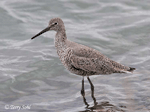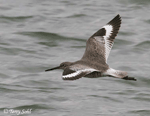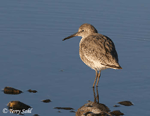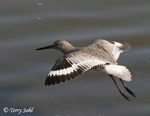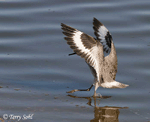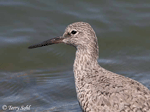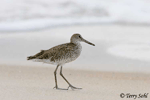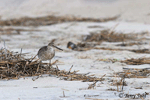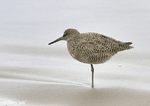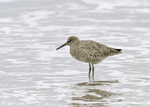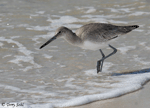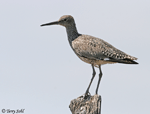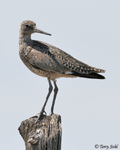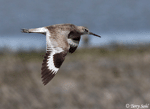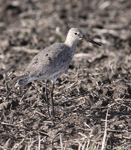Willet
Catoptrophorus semipalmatus
| Length: 15 inches | Wingspan: 27 inches | Seasonality: Summer / Migrant |
| ID Keys: Black and white wing pattern in flight. Straight heavy bill, thick gray legs, plain plumage when not in flight. | ||
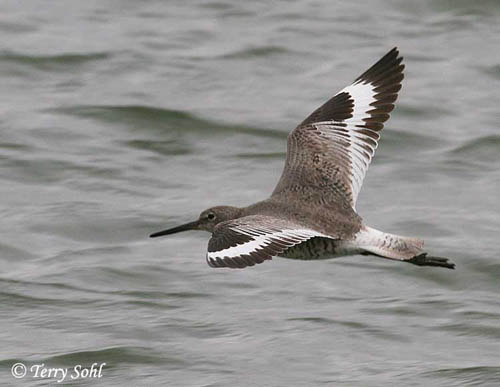 Willets appear to be rather plain, nondescript shorebirds when
at rest, but display a striking black-and-white wing pattern when in
flight. Willets have two distinct subpopulations, one nesting on the
freshwater marshes in the interior of the country, and another favoring salt
marshes along the Gulf and Atlantic coasts.
Willets appear to be rather plain, nondescript shorebirds when
at rest, but display a striking black-and-white wing pattern when in
flight. Willets have two distinct subpopulations, one nesting on the
freshwater marshes in the interior of the country, and another favoring salt
marshes along the Gulf and Atlantic coasts.
Habitat: Nests near freshwater marshes in South Dakota, preferably near native grasslands. Occurs in many aquatic habitats during migration and in winter.
Diet: Varies depending on location. On the northern Great Plains, insects make up a large portion of the diet. It also feeds on crustaceans, small mollusks, small fish, and some vegetation. On wintering grounds along the coasts, Willets consume large numbers of crabs and other crustaceans, small fish, and marine worms.
Behavior: Forages by walking along the shore or in shallow water, picking food items off the water or ground's surface, or by probing with its bill.
Nesting: June
Song: Willet Song
Migration: Summers in the northern Great Plains and parts of the western U.S. Winters along coastlines of the U.S., Mexico, and Central America.
Interactive eBird map: Click here to access an interactive eBird map of Willet sightings
Similar Species: Greater Yellowlegs, Lesser Yellowlegs
Conservation Status: Numbers were seriously depleted in the 19th century due to hunting pressure. Numbers have recovered since, but local declines have been noted in some areas due to habitat loss. Nonetheless, they are found over a very wide geographic area and are quite common in parts of their range. The IUCN considers the Willet to be a species of "Least Concern".
Further Information: 1) WhatBird - Willet
3) Audubon Field Guide - Willet
Photo Information: April 30th, 2005 -- Highway 81 Lakes north of Madison -- Terry L. Sohl
Additional Photos: Click on the image chips or text links below for additional, higher-resolution Willet photos.
| Click on the map below for a higher-resolution view |
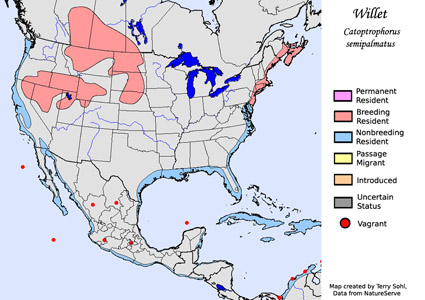 |
| South Dakota Status: Uncommon migrant throughout the state. Uncommon summer breeding resident in the northern part of the state, less common west and absent in the southeast. |
Additional Willet Photos
Click for a higher-resolution version of these photos
